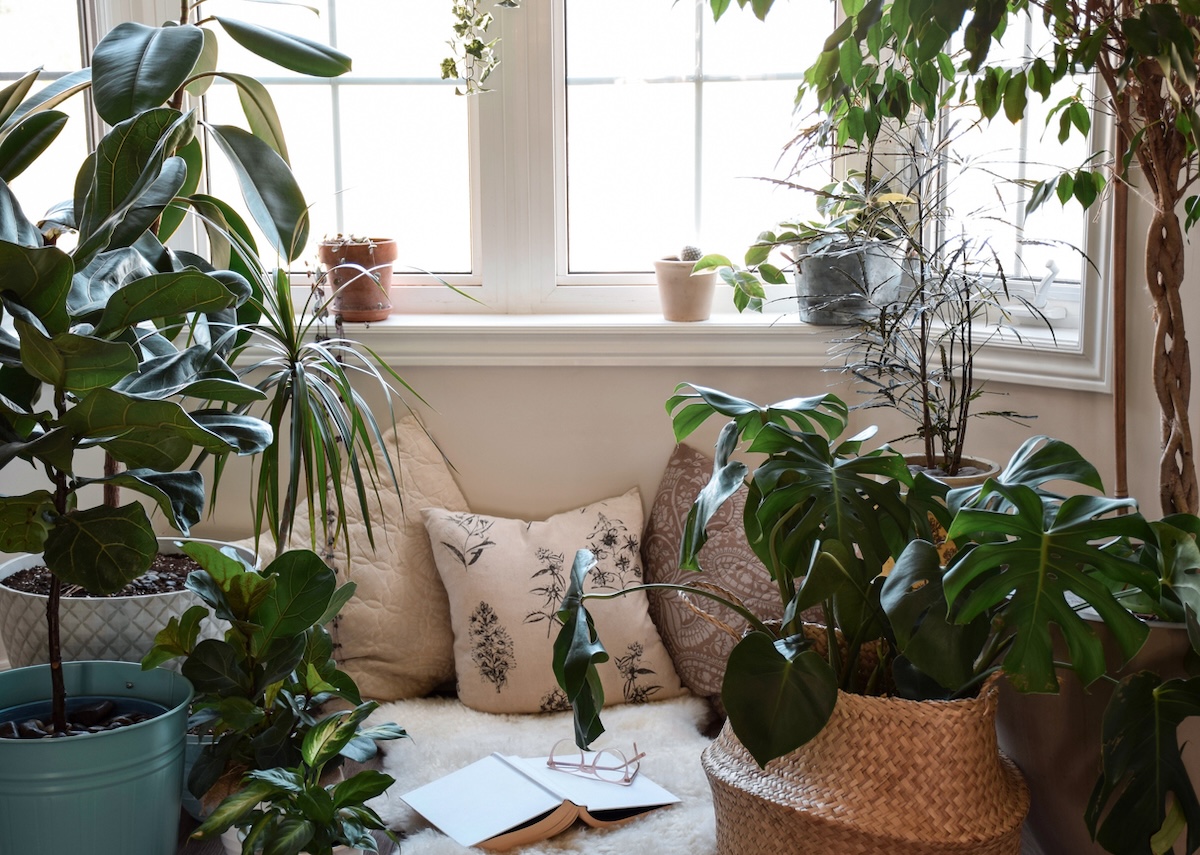

We may earn revenue from the products available on this page and participate in affiliate programs. Learn More ›
Linked to Taoism but not officially a religion, feng shui (meaning wind and water) is an ancient Chinese practice intended to assist people in aligning their energies with their environment. It creates balance through harmony and positive energy through the specific placement of objects to enhance the flow of energy.
This 3,500-year-old philosophy incorporates five elements to achieve harmony: fire, water, metal, earth, and wood. “Plants represent the wood element,” explains Lisa Eldred Steinkopf, the Houseplant Guru. The growth of live plants symbolizes productivity, opportunities, and growing wealth. “Plants are known to have positive energy, or chi,” Steinkopf says.
Good vs. Bad Feng Shui Plants
Good feng shui represents energy, growth, compassion, and flexibility. In feng shui, green symbolizes rejuvenation. Therefore, good energy comes from placing healthy plants in the right area in the home—not just where they get good light, but where they can stimulate energy in different aspects of your life, and where they’re most needed to absorb negative energy.
Healthy plants with lush, dense growth are good feng shui. Tall plants and those with upward growth symbolize energy reaching new heights. All feng shui plants should be healthy and easy to care for.
There really are no bad luck plants in feng shui. However, dead or dying plants drain energy. So do sharp-leaved plants and cacti, Steinkopf says. It’s the concept of “sha qi”—sharp or attacking energy. This “dangerous” energy is associated with fear and trouble. “The plants used should have soft, rounded leaves,” Steinkopf says. Fake plants are not recommended, she adds.
RELATED: 20 Huge Houseplants That Make a Statement
1. Jade Plant (Crassula ovata)
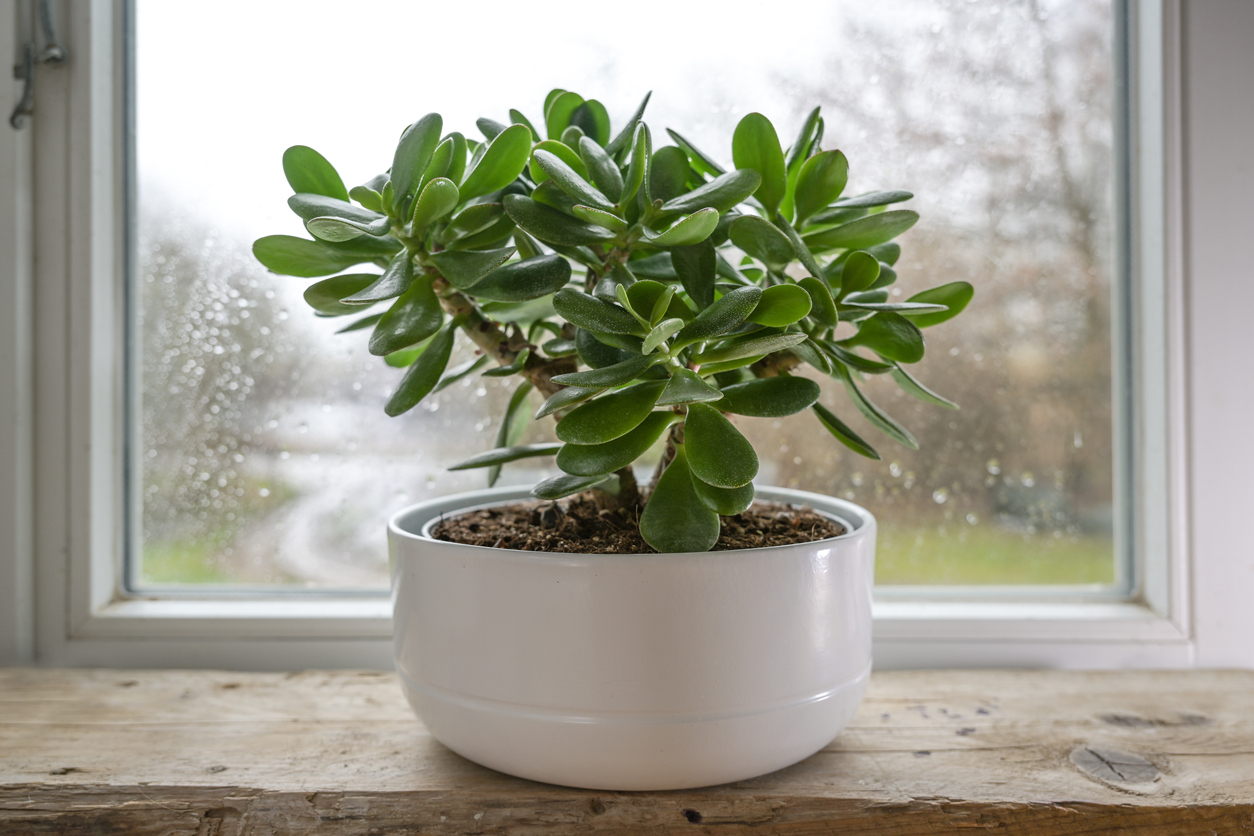
Also called the feng shui money tree, jade plants are evergreen succulents with upright, rounded leaves that look like coins. Thick, fleshy leaves grow on a miniature tree-like stalk that can reach 6 feet tall. A long-lived plant, the jade plant represents wealth that can be passed down through generations.
Easy to care for, jade plants are good feng shui plants for office settings. Placed in the southwest part of the building (the feng shui money corner that attracts wealth, abundance, and prosperity), they will benefit from the bright, indirect light of that exposure. Soggy soil can ruin a jade’s fortunes.
2. False Shamrock (Oxalis triangularis)
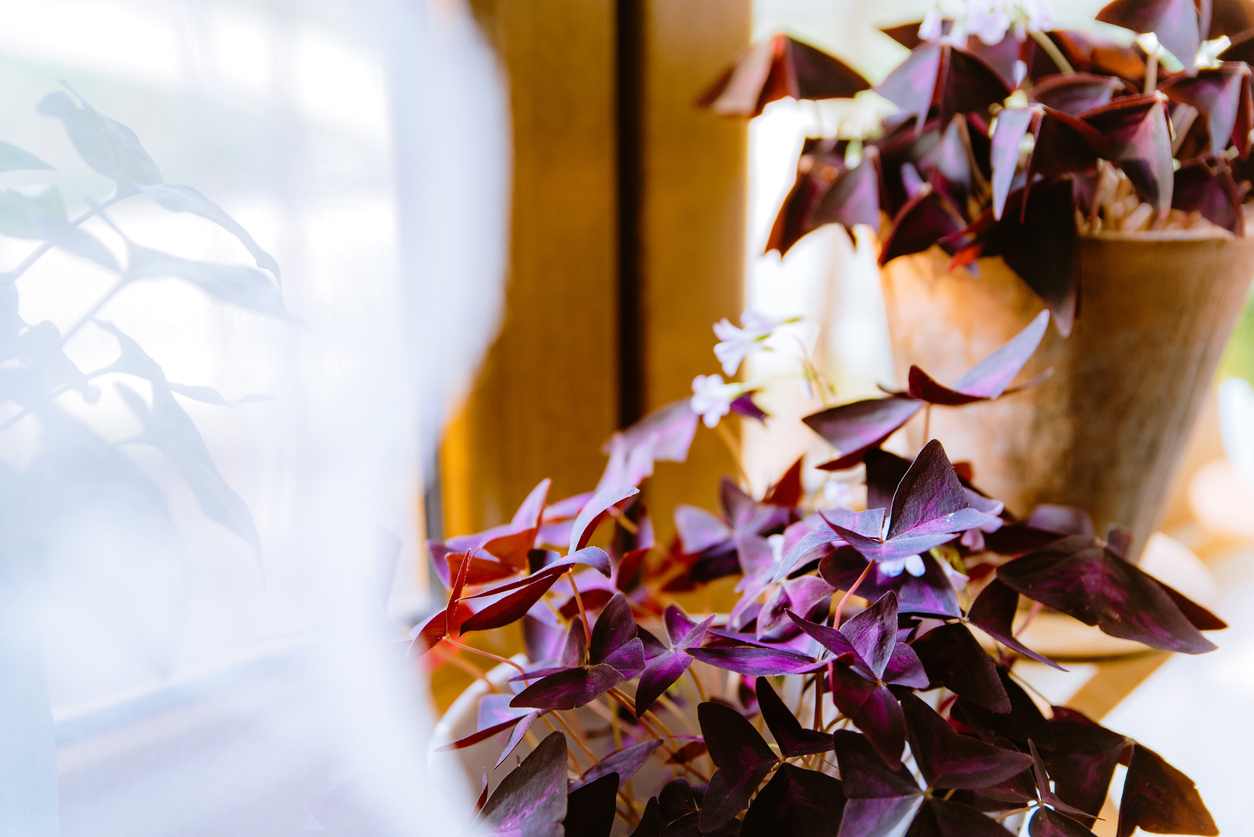
One of the familiar indoor plants for good luck is typically seen on St. Patrick’s Day. Known as false shamrock or the good luck plant, oxalis is a small three-lobed plant that resembles clover. Three is a lucky number in feng shui—but oxalis is not lucky for pets, as it’s toxic.
Growing from a rhizome to a height of 6 to 12 inches, with green or purple leaves, oxalis is easy to care for, making it a popular indoor plant—especially around March 17. Preferring cooler temperatures or shade on sunny afternoons, oxalis is nyctinastic; its leaves close up at night.
3. Money Tree (Pachira aquatica)
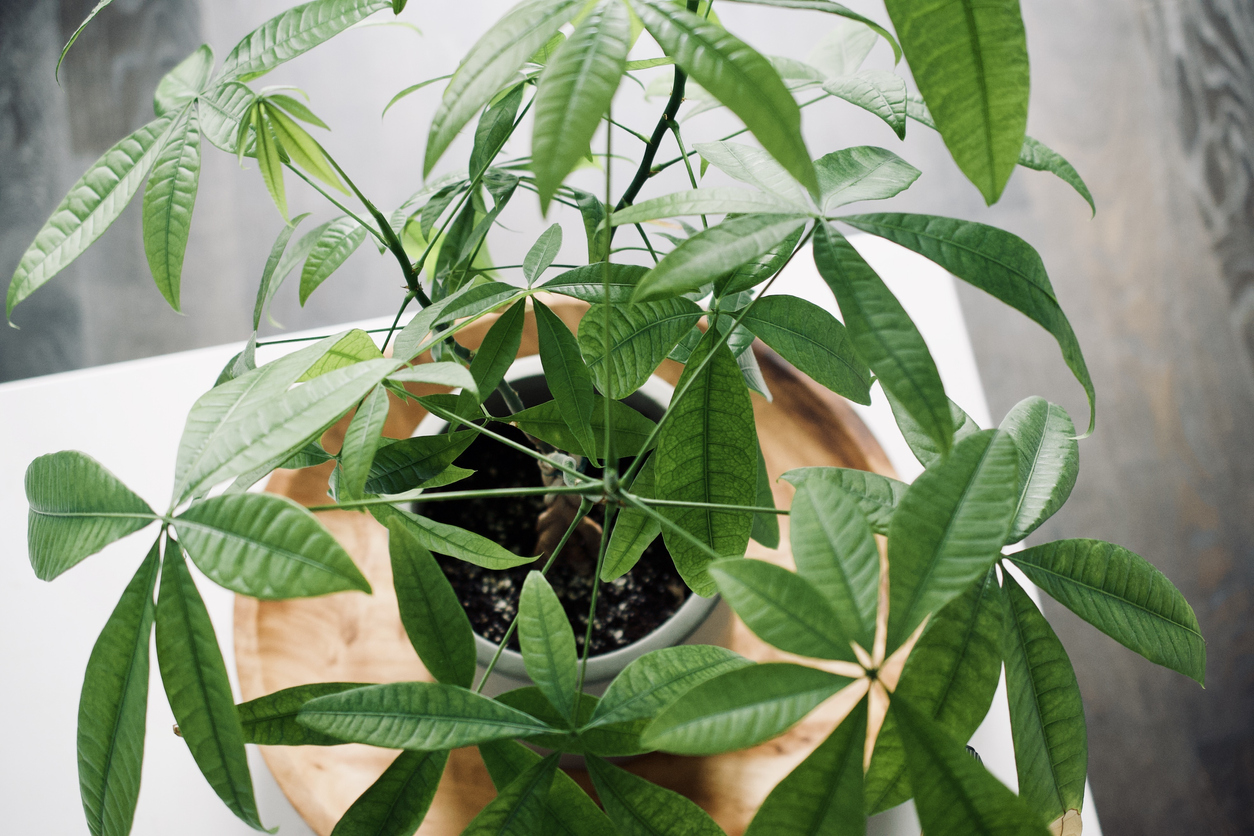
The money tree, typically sold with five braided slender trunks topped by a flush of palmate leaves, is an easy-care tropical indoor plant capable of forgiving minimal neglect. Reaching 6 to 8 feet indoors, the slow-growing money tree requires bright, indirect light and infrequent watering.
Thought to bring wealth, positive energy, and good fortune, the nontoxic money tree is considered one of the best feng shui plants because it absorbs toxins from the air and because leaves grow in a five-star formation—five being an important number in feng shui that represents the five elements.
4. Snake Plant (Sansevieria trifasciata)
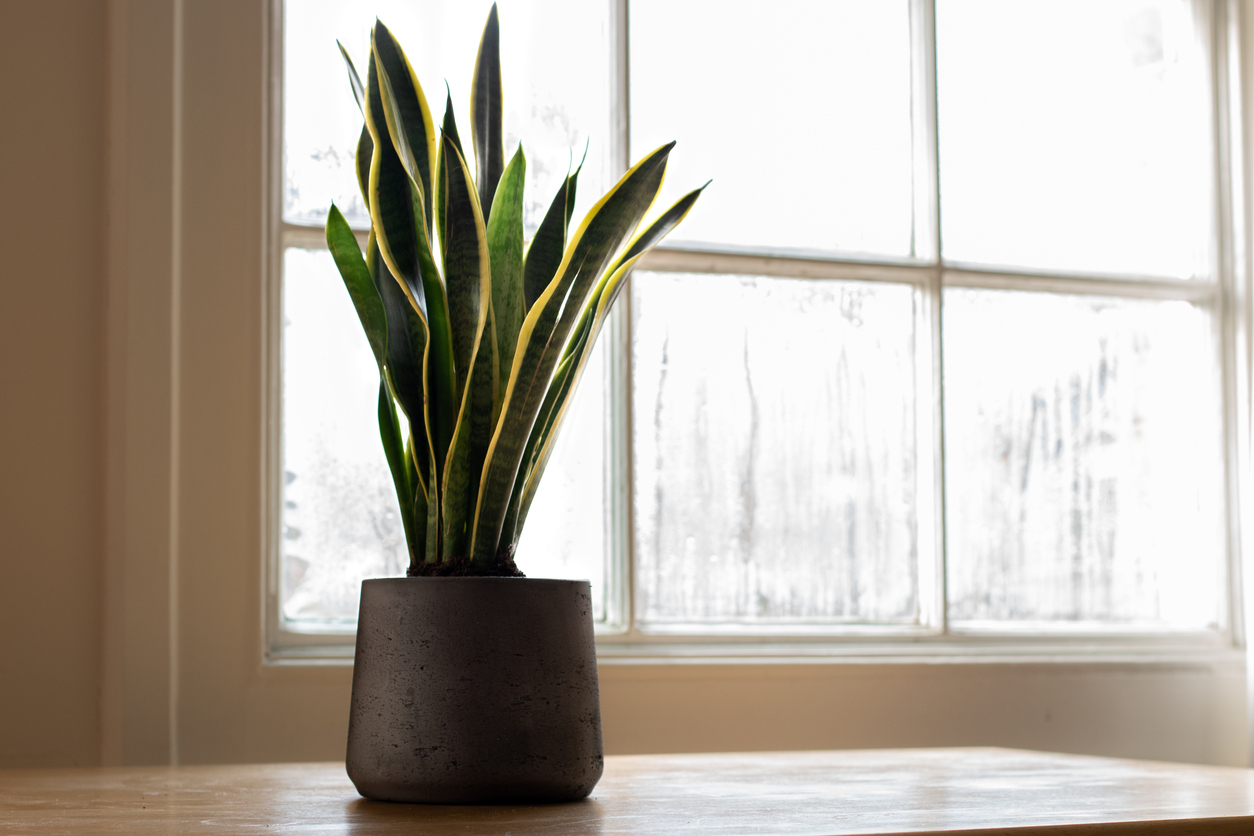
A low-maintenance succulent that survives low-light conditions, the snake plant—aka, mother-in-law’s tongue—is a tall, architectural plant that’s easy to grow. Its sword-shaped green leaves, edged in gold, can grow up to 8 feet tall.
Snake plant feng shui brings fire energy. “Though these plants appear sharp,” Steinkopf says, “they are known to have protective energy.” In addition to safety and security, they denote strength, good health, and good luck. Bright, indirect light is best, but the snake plant tolerates shade. What it won’t tolerate is overwatering. Since it’s not fussy about temperature or humidity, it does well in a feng shui living room.
5. Areca Palm (Chrysalidocarpus lutescens)
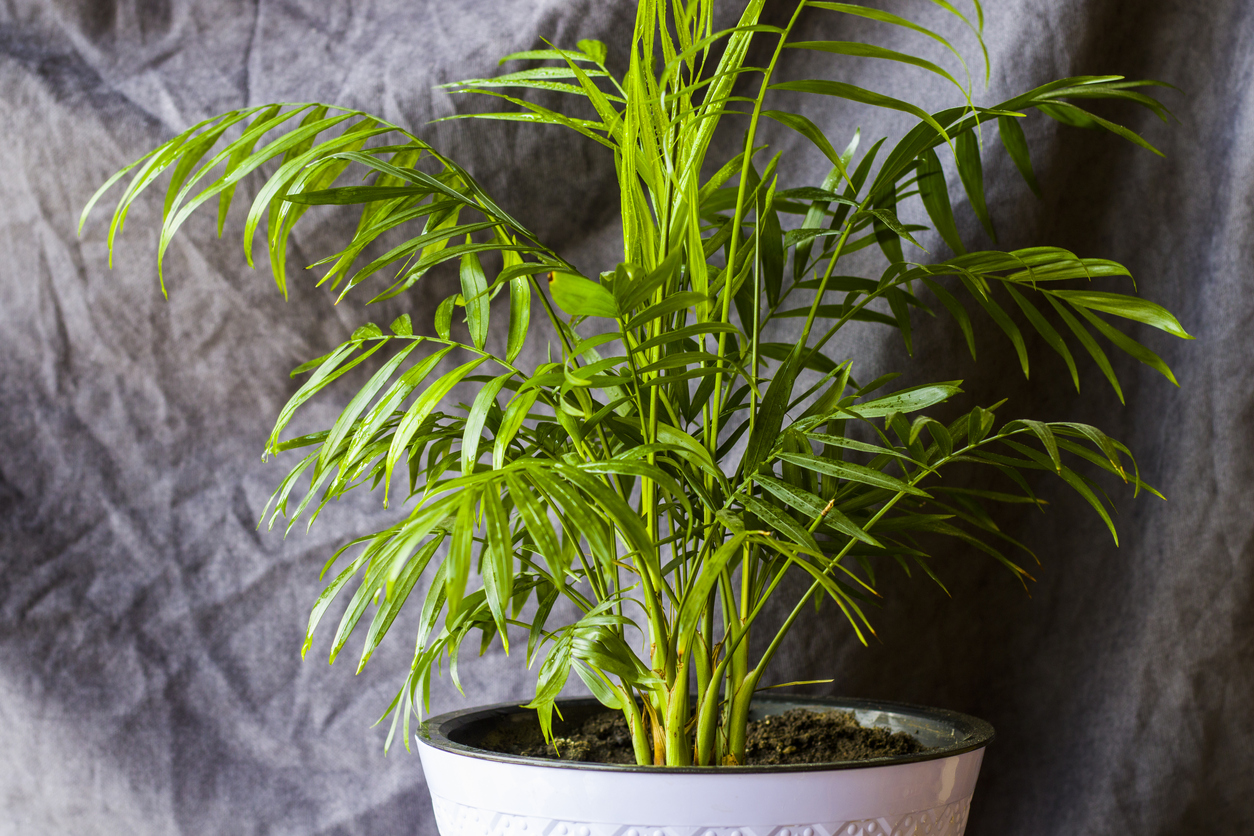
The tall, graceful palm from Madagascar produces multiple shoots that erupt into arching fronds. Growing up to 10 feet indoors, the areca palm is valued for more than just its delicate beauty. Known to purify the air of toxins, it increases oxygen and improves humidity in the home.
“The areca palm is known for its positive energy,” Steinkopf says. It attracts wealth and peace. For the best feng shui, it should be placed near a home’s entry, although anywhere with bright, indirect light—and enough space to accommodate its spreading leaves—will do. Keep its soil moist, but so it drains well.
RELATED: 12 Houseplants That Collect the Most Dust—and Why That’s a Good Thing
6. Boston Fern (Nephrolepis exaltata)
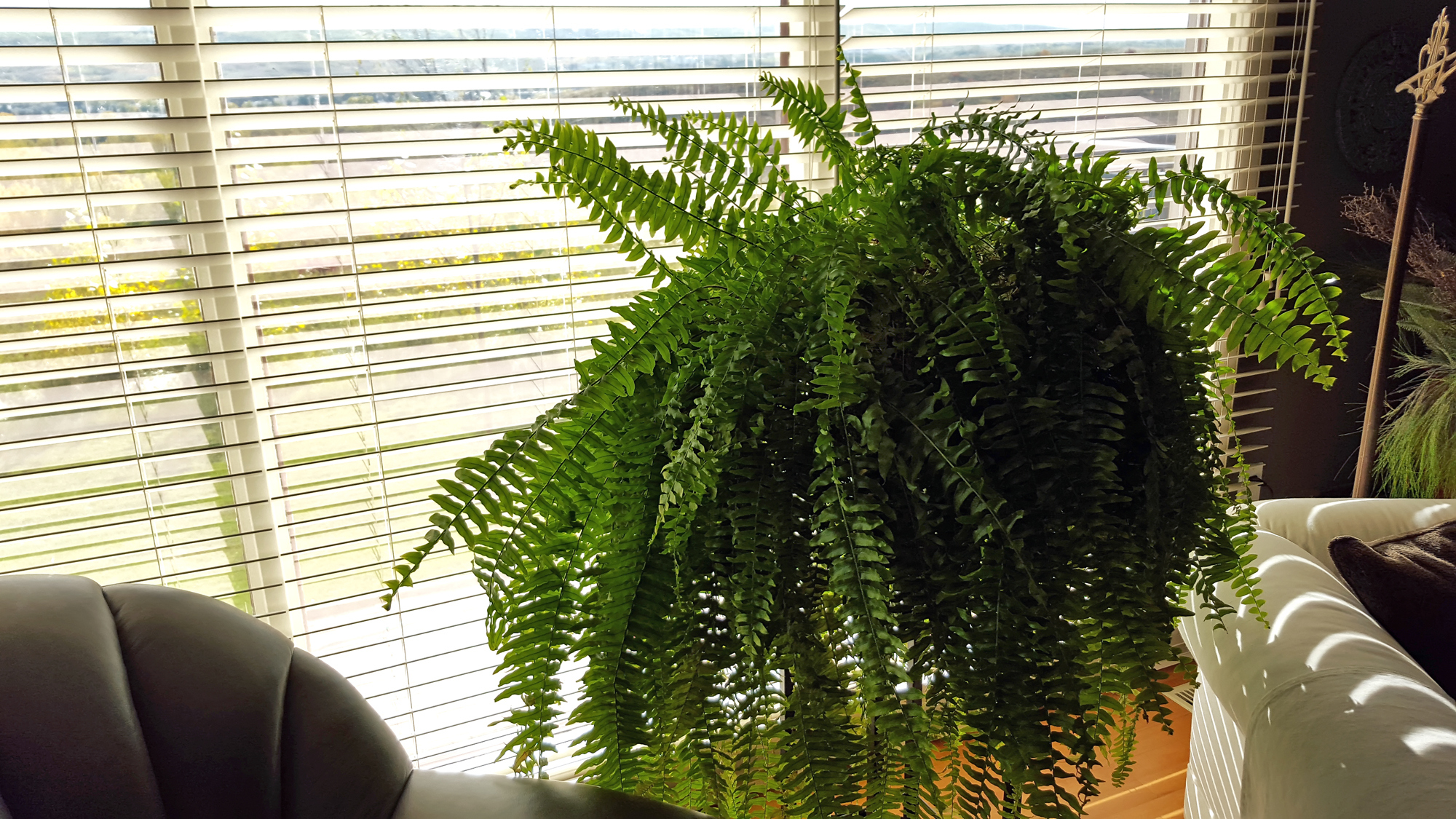
Commonly seen hanging from the ceiling of a wraparound porch, Boston ferns are lush, bushy plants with sword-shaped stems sprouting small leaves in a feather-like pattern. As the fronds grow long, they arch gently, trailing up to 3 feet.
Preferring bright, indirect light, moist but not soggy soil, and high humidity, Boston ferns do well in bathrooms, where their feng shui offsets the negativity of draining water (and energy). They like rich, well-draining soil, but don’t need a lot of fertilizer. Overwatering or lack of humidity can cause them to shed those little leaves.
7. Lucky Bamboo (Dracaena sanderiana)
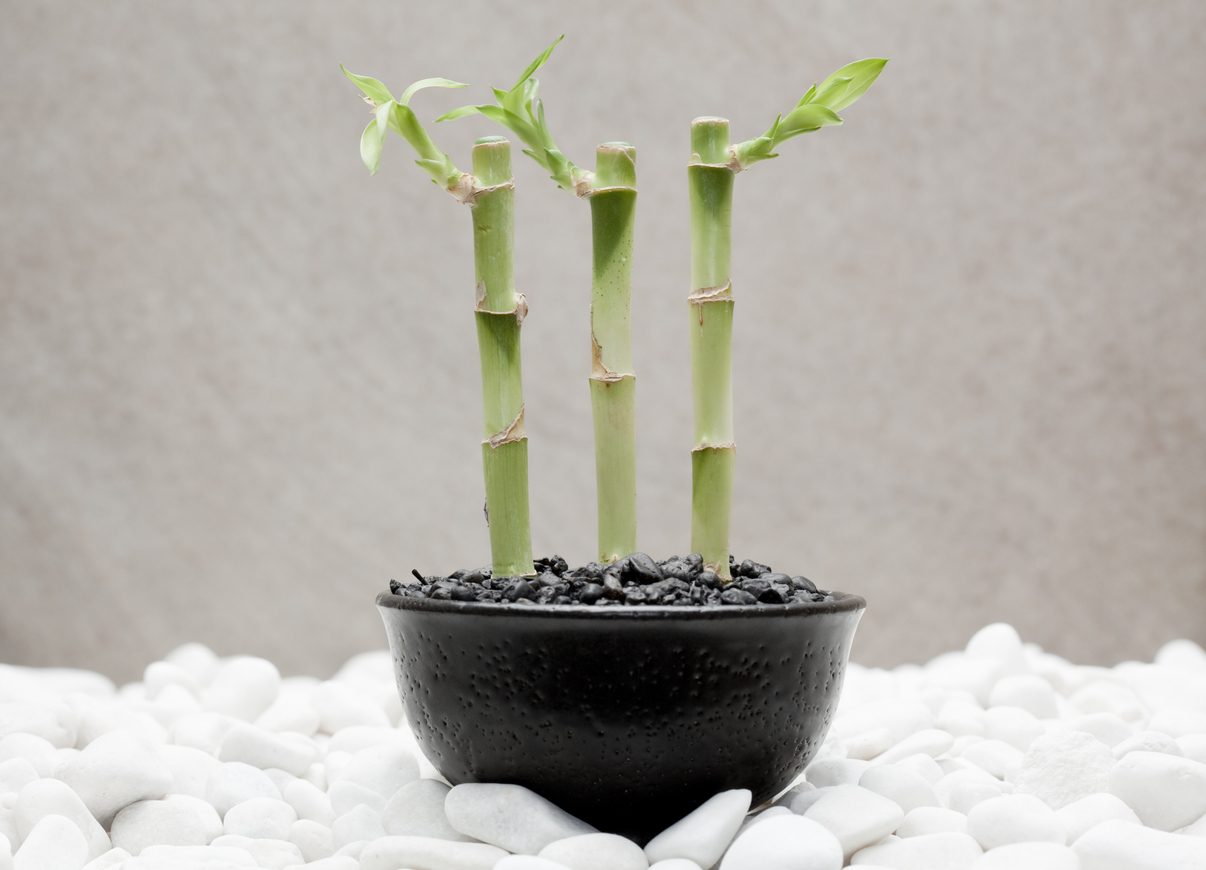
Many experts advise against plants in the bedroom, as it’s bad feng shui. However, bamboo stalks symbolize growth in a relationship, and therefore, contribute to a feng shui bedroom—although this lucky plant isn’t technically a bamboo, but rather a dracaena. Nevertheless, it’s a symbol of strength, resilience, longevity, and good fortune. Different numbers of stalks hold different meanings.
It’s so easy to care for that lucky bamboo, since it can grow in just water. The plants like bright, filtered light and warm temperatures. Thanks to their tall but narrow structural appearance and their ability to clean the air, they’re also great home office companions.
8. Peace Lily (Spathiphyllum wallissii)
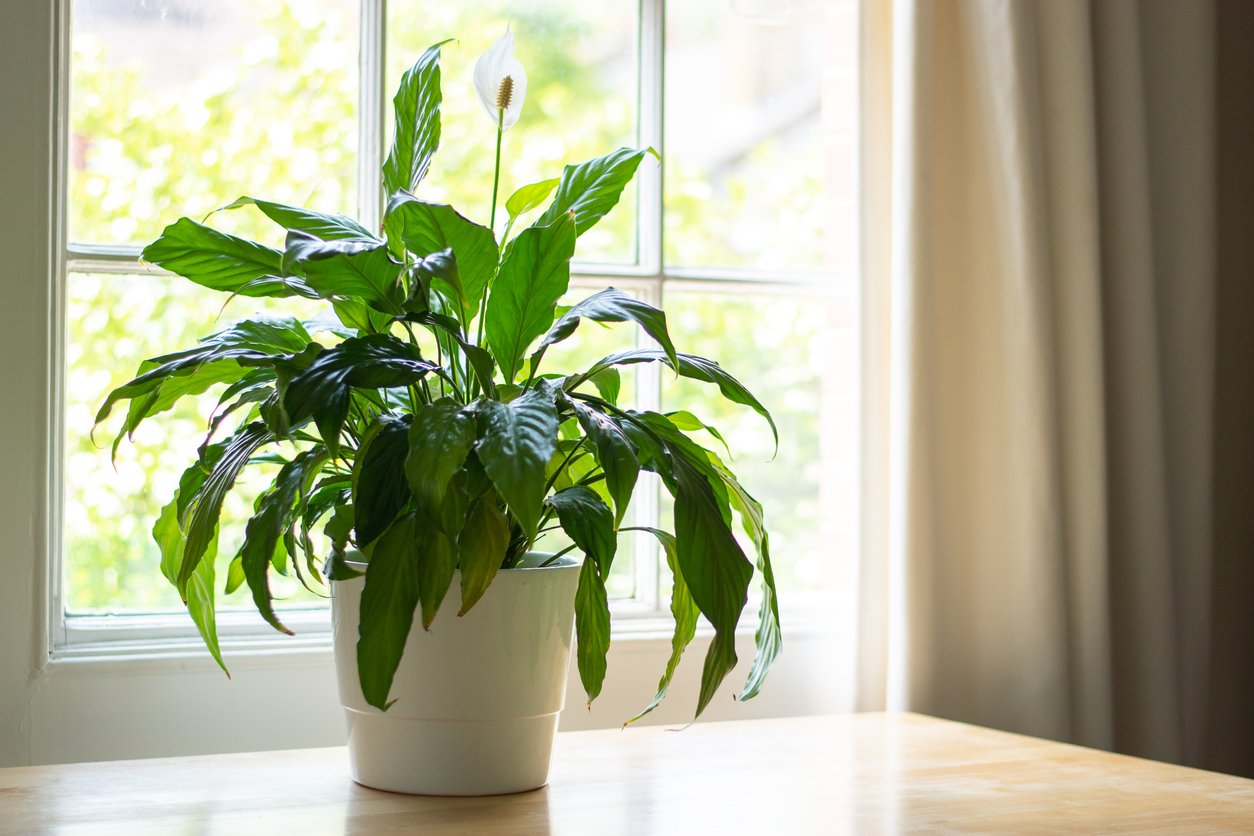
A shapely, shrubby plant with dark green glossy leaves playing backdrop to creamy white hooded blooms, the peace lily is a popular, easy-care plant symbolizing peace, sympathy, hope, and healing. In feng shui, green leaves attract wealth and white flowers bring good luck. These plants are well-placed in a living room.
This tropical evergreen tolerates low light, but will only bloom with bright, indirect light. Its broad leaves help purify the air, but will droop if the plant is thirsty. While it doesn’t like the soil to dry out, it also suffers if soil is saturated. The spath is mildly toxic to people and pets.
9. Rubber Plant (Ficus elastica)
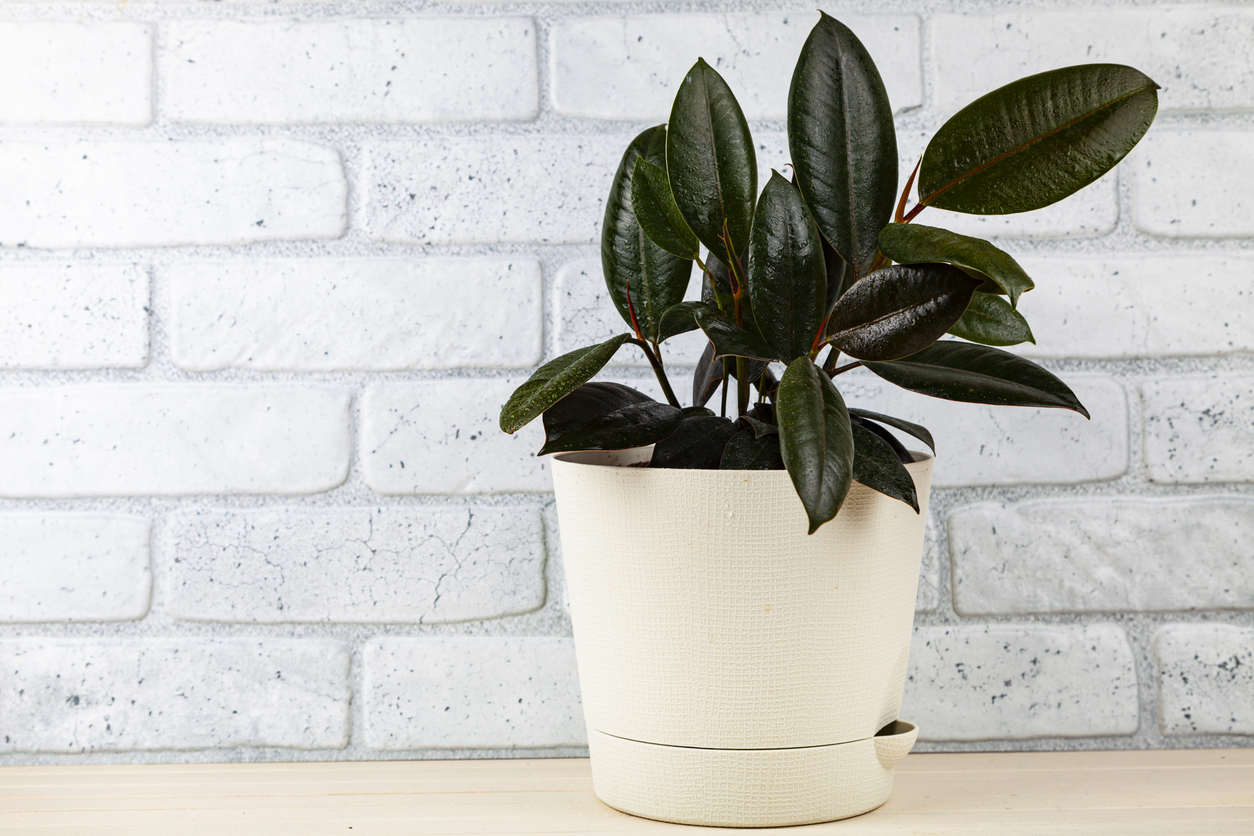
Rubber plants are tall, upright statement-makers. Their large, thick, rounded leaves are green, red, or variegated. These broad leaves assist the flow of positive energy, bringing good luck, peace, and happiness, while the height of these 10-foot beauties signifies growing your dreams through the spread of positive energy.
The rubber plant—a member of the ficus family—prefers bright, indirect light and consistently moist, well-drained soil. They will thrive if given the right amount of light. Care is simple, but adding regular dusting of the leaves can improve plant health. Trimming leaves or stems produces a milky sap.
RELATED: Beyond Poinsettias: 23 Houseplants That Bloom in Winter
10. Spider Plant (Chlorophytum comosum)
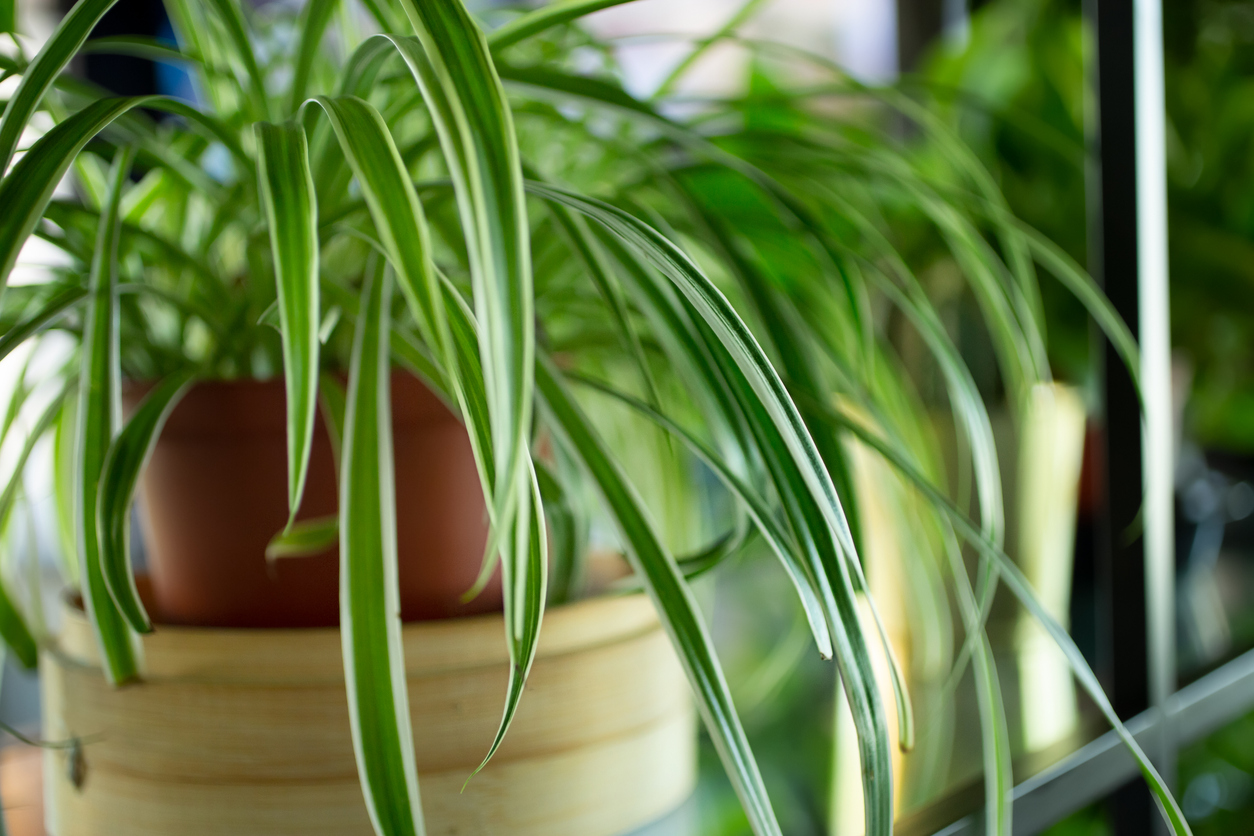
A popular houseplant since Victorian times, the spider plant is easy to care for and easy to share. Its long, slender leaves gently arch in overlapping waves. It regularly sends out long stems that produce tiny white flowers. After blooming, little plantlets appear, complete with their own root systems, ready for planting or hanging around to create the airplane effect they’re sometimes named after.
The leaves’ upward growth and bright green color or variegation accentuate positive energy, enhance focus, and generate good luck. Thus, spider plants are great in an office where they get moderate light by hanging in a window.
11. Aloe Vera (Aloe barbadensis ‘Miller’)
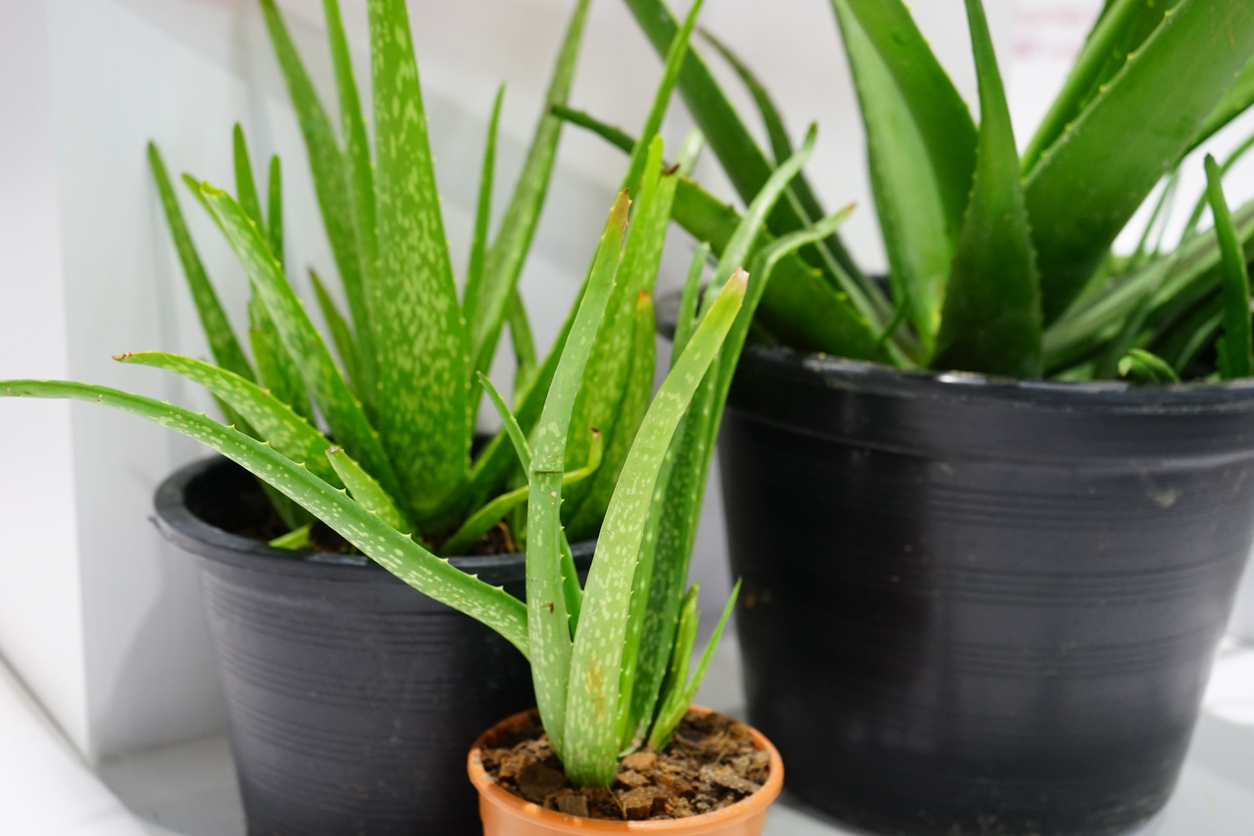
Appreciated for its healing properties, aloe vera’s soothing energy is as important for feng shui as its leaves’ translucent gel is for burns and skin irritations. Aloe’s energy is said to cool off bad vibrations and realign the space to welcome positive energy.
The thick, serrated leaves of this tropical succulent shoot outward from a rosette base, basking in bright, indirect light. It requires sandy soil or cactus potting mix and regular watering. If the plant gets too dry, its fleshy leaves pucker and shrivel. On the other hand, too much water turns aloe vera yellow and mushy.
12. Golden Pothos (Epipremnum aureum)
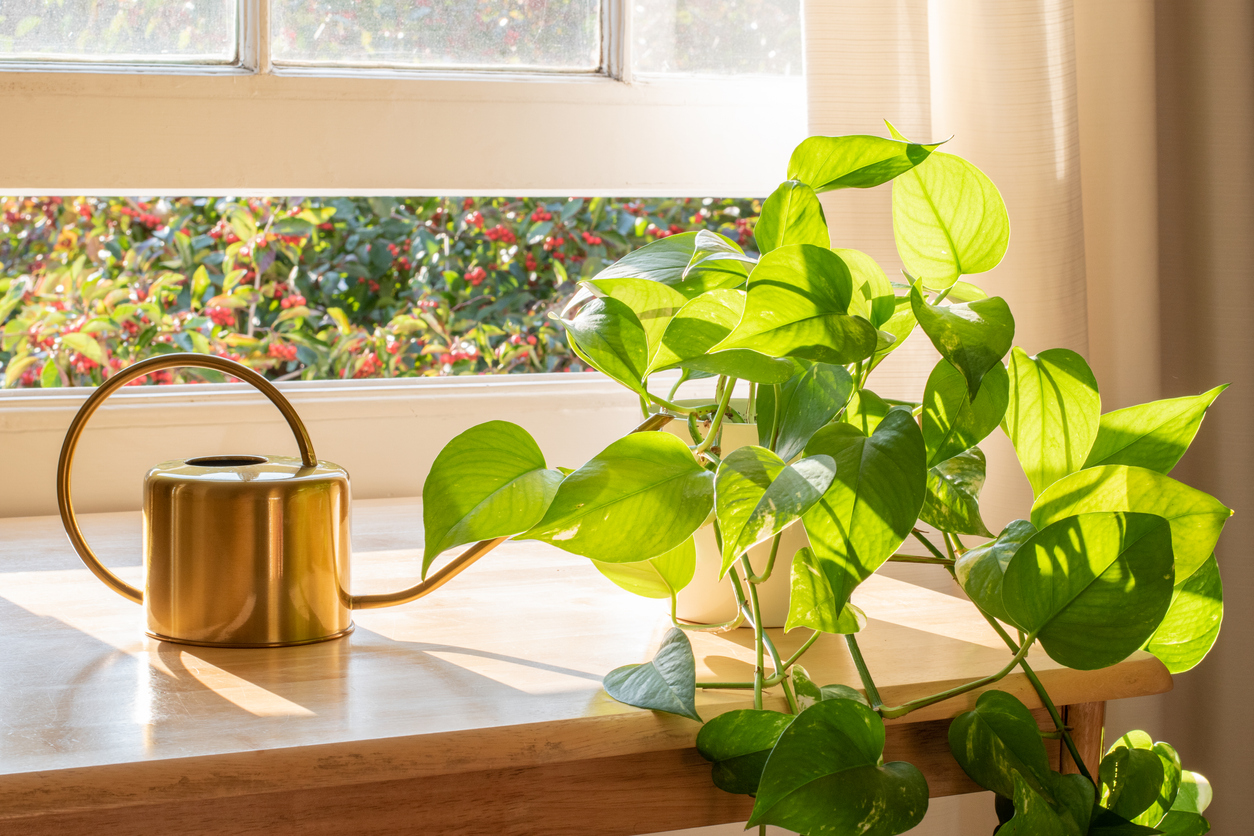
Known as Devil’s ivy, golden pothos is a Polynesian vining plant with marbled green and white or yellow heart-shaped leaves. This low-maintenance plant thrives in bright, indirect light, but also does well in low light. Although over-watering can cause root rot, Steinkopf says it’s an “easy-to-grow, versatile plant.”
Feng shui suggests that the fast-growing pothos be placed in the kitchen or office, where it sucks up bad energy from computers. Its dense foliage of bright green, heart-shaped leaves is said to attract good luck and abundance. However, it is mildly toxic to people and pets.
RELATED: How to Propagate Pothos Plants: 3 Foolproof Methods, According to Experts
13. African Violet (Saintpaulia ionantha)
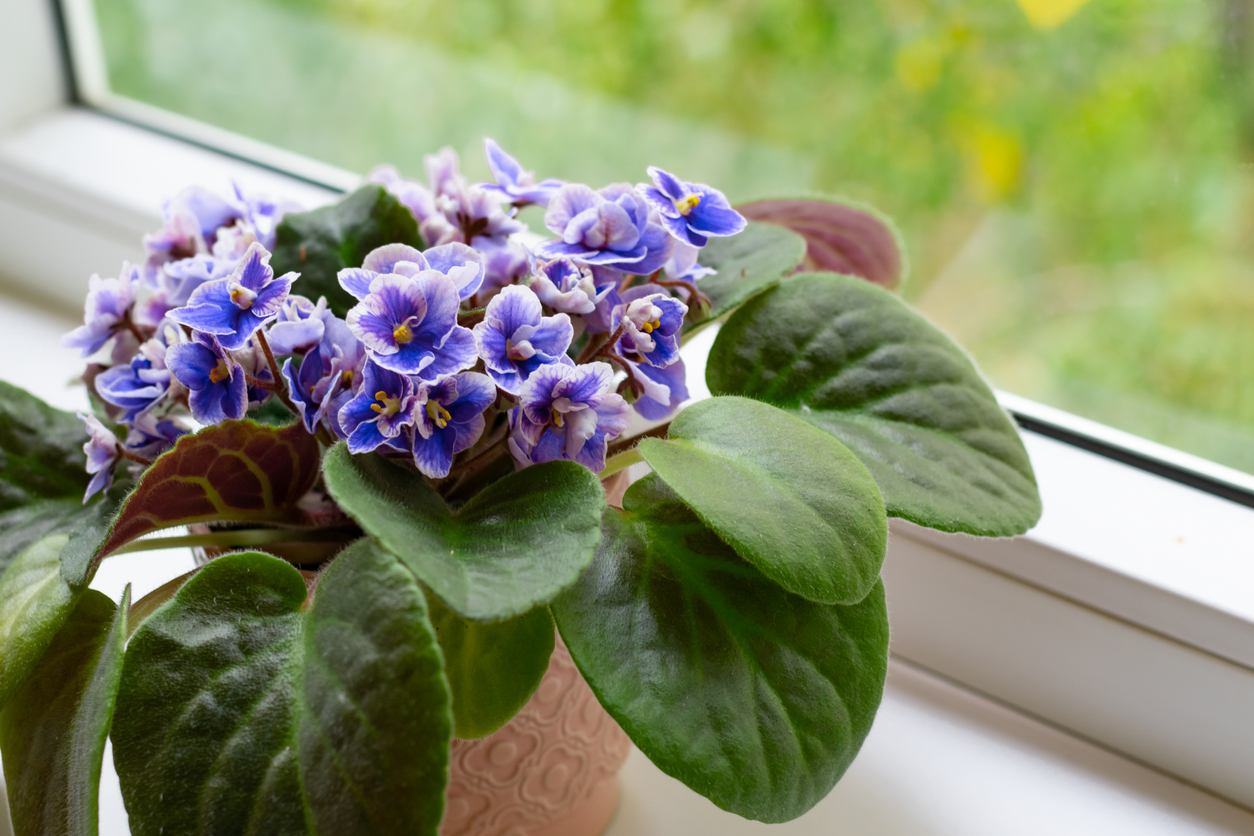
The cheerful African violet, with clusters of colorful blooms, has a reputation for being fussy, but is worth the trouble. Like its relative the Gloxinia, this violet (named for the traditional color of its flowers) features fleshy stems that are susceptible to crown rot if the plant is overwatered or watered from above. But don’t let soil dry out, either. Bright, filtered light is best for flower production, but direct light burns the leaves.
These compact color-bearers enhance a home’s wealth because purple is the color of wealth in feng shui. Their fuzzy round leaves soften energy and the cute flowers attract good luck.
14. ZZ Plant (Zamioculcas zamiifolia)
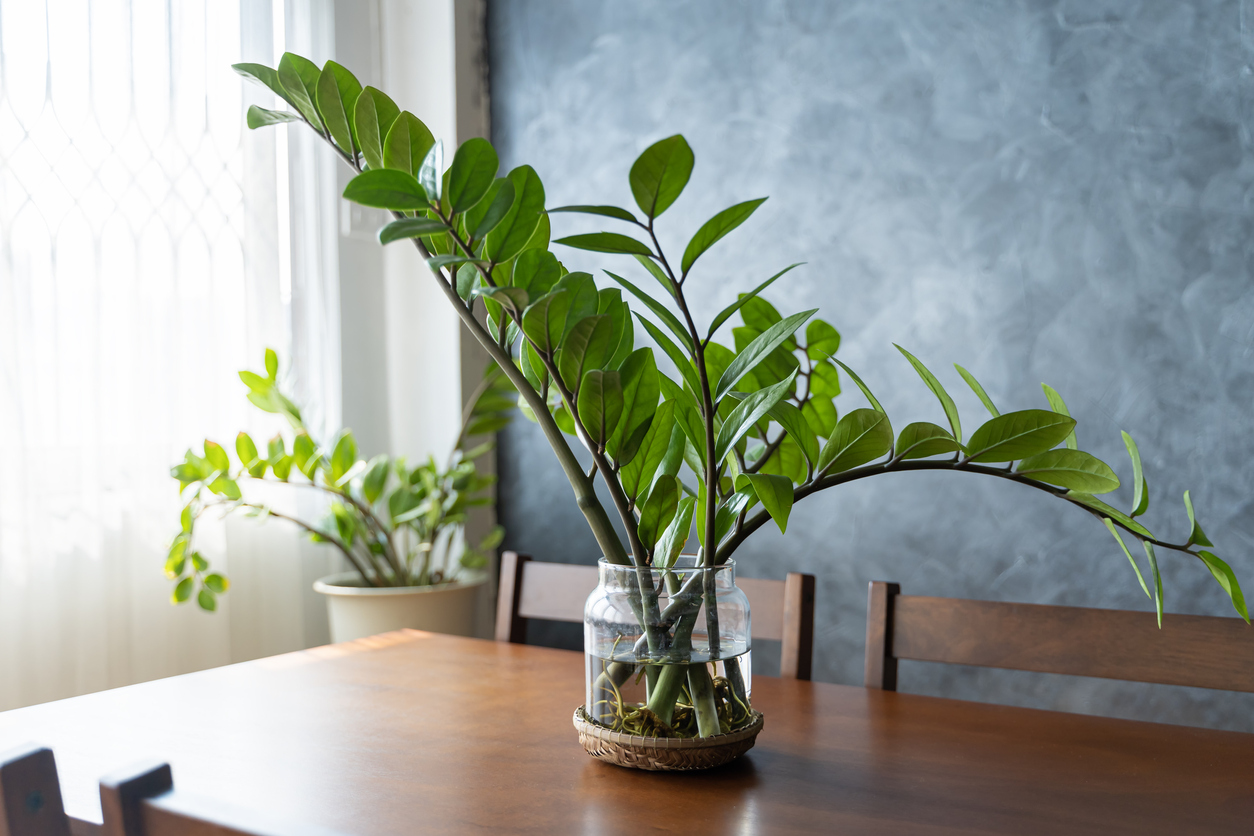
As one of the most low-maintenance plants, the ZZ plant can thrive even in low light (although it can get leggy from too little light). This African native is drought-tolerant; in fact, overwatering can rot its thick, potato-like rhizomes.
Reaching 2 to 4 feet tall and wide, the ZZ plant’s shiny, waxy leaves grow upright, representing abundance reaching the heavens. Its slow, steady growth implies dedication. The leaf pattern looks like the feng shui string of coins, so this plant represents wealth and success, which makes it a good choice for hallways, where it can usher in good fortune, and adorn the wealth corner of the home.
15. Heart-Leaf Philodendron (Philodendron hederaceum)
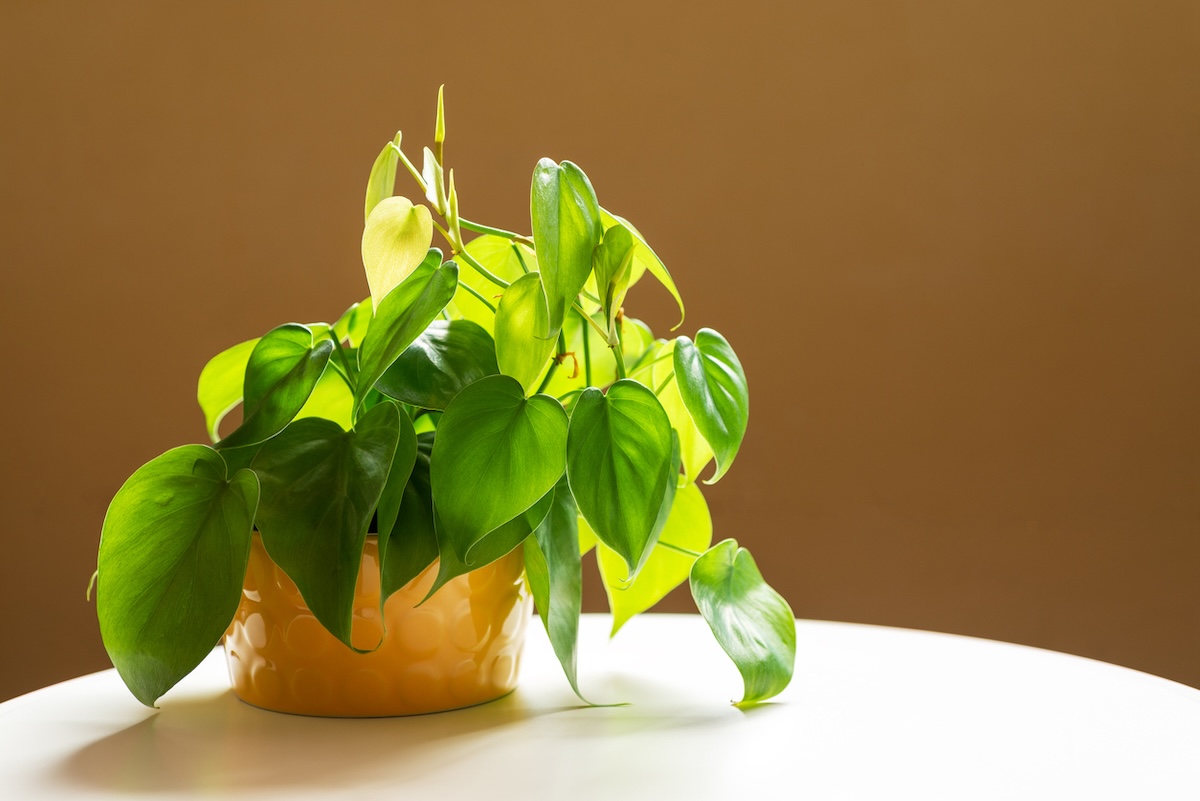
While the philodendron heart leaf, also known as the sweetheart plant, might resemble a pothos plant, they are two entirely different species. Sporting large, glossy, heart-shaped leaves on trailing stems, this plant happily drapes over the sides of a hanging basket.
Requiring minimal attention, the philodendron forgives neglect. It can survive inconsistent watering and low light, although medium to bright indirect light produces better growth. Occasional pruning and repotting are necessary, but it’s otherwise a low-maintenance feng shui plant. High humidity promotes large leaf development, making it a good candidate for bathroom placement, which also suits feng shui principles because it can counter the energy-draining effects of outwardly flowing water.
